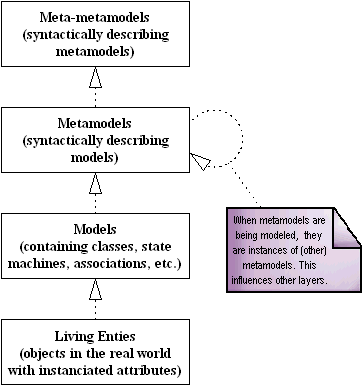Introduction
The basic modeling is targeted toward the behavior of living things. What is "model"? Of course it is a verb; it is "to construct or fashion in imitation of a particular model" (Merriam-Webster). Well, it seems to be recursive but in fact it isn't, because the "model" here in the definition is a noun, whose semantics we know quite well (I hope so). It first comes from the impression of living entities in human's minds.
![]() Because we are constructing an imitation through modeling, our model must not
be exactly the same as the entities being modeled. Furthermore, limited
by our technology, the imitation will never be exact (I believe so).
Because we are constructing an imitation through modeling, our model must not
be exactly the same as the entities being modeled. Furthermore, limited
by our technology, the imitation will never be exact (I believe so).
![]() The entities we model must be particular. This means our models are more general compared to those entities, and the entities are instances of our models.
The entities we model must be particular. This means our models are more general compared to those entities, and the entities are instances of our models.
It is not necessary that entities are touchable objects. To qualify in our discussion on modeling, they just have to be something imitable, whether material or immaterial. They can also be something relatively general, as long as we can find something even more general and of which they are just instances. This argument implies that entities themselves can be models, if we will them to be.
The four (conceptual) layers
UML is claimed to have a four-layer architecture, which, in my opinion, is rather conceptual, depending on different views of designers. The architecture is illustrated like this:

I call this architecture a conceptual thing because there is a loop shown in the illustration. In case we make the metamodel a model and study it in a new way, the model and meta-metamodel in the original picture change their roles accordingly. So, without a certain context, nothing is born a model, metamodel or meta-metamodel.
Maintained by Thomas Feng, Winter 2002
